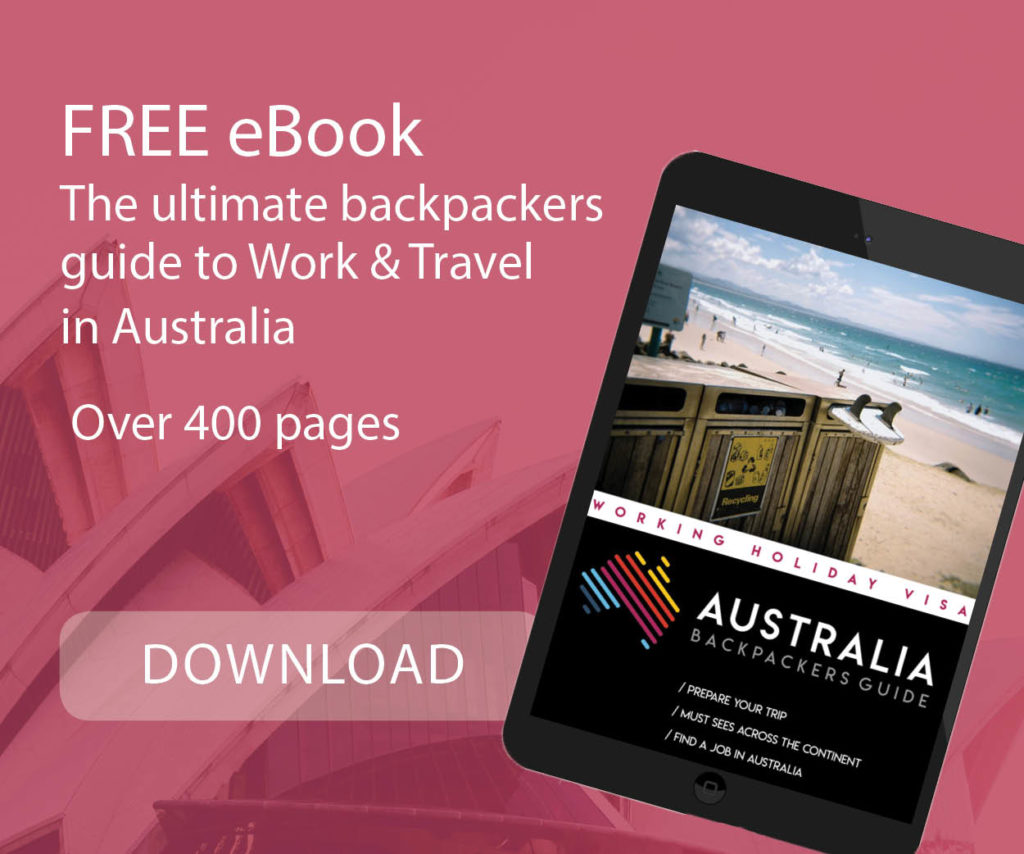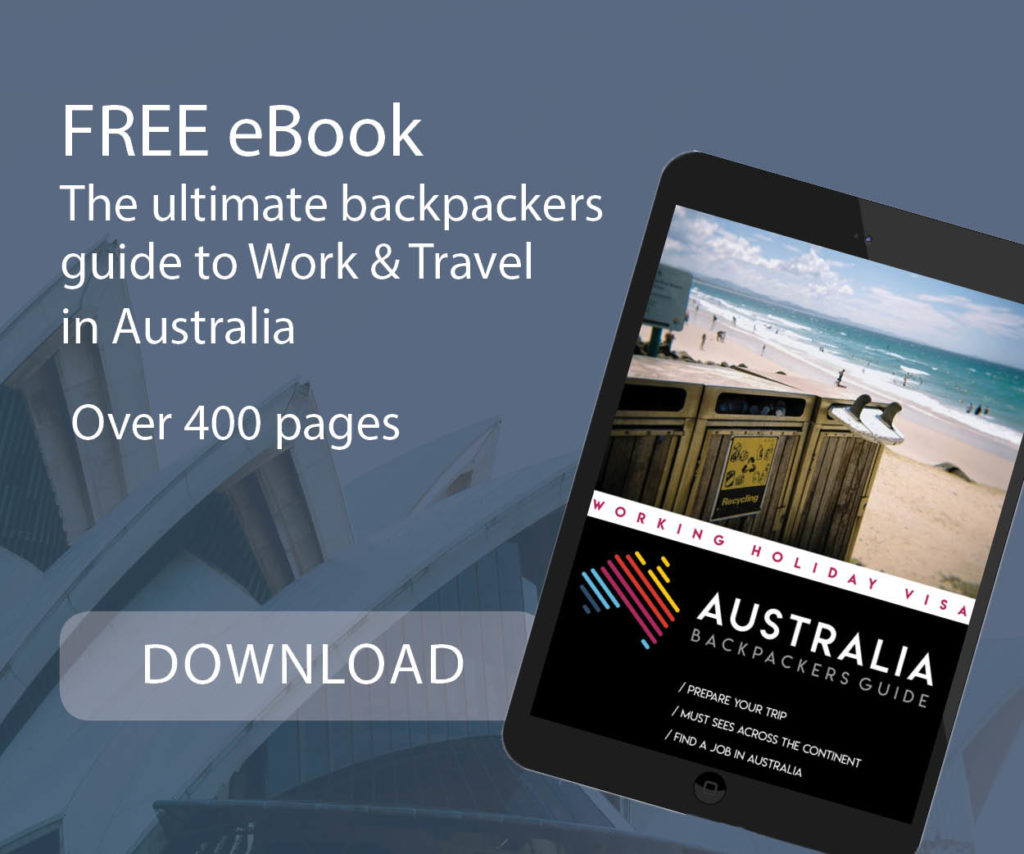
Working conditions in Australia are obviously different from Europe. The cost of living in Australia is quite high, but overall you can earn a better living there. In Australia, there is a national minimum wage, but also minimum wages by sector of activity. Here is everything you need to know about salaries in Australia.
Table of Contents
National Minimum Wage
Each sector of work activity is governed by a collective agreement called an “Award”. It is this Award that defines the minimum rate of remuneration, according to the level of qualification in each sector. These pay rates may be higher than the national minimum wage.
If a company is not affiliated with any particular Award, the national minimum wage applies. This is the minimum rate of pay provided by the Fair Work Act 2009 and is reviewed annually.
From 1 July 2024, the National Minimum Wage (for award-free adult employees) rose by 3.75%:
- A$24.10 per hour
- A$915.90 per week (based on a 38-hour week)
- Casual loading (25% extra) brings the casual rate to A$30.13 per hour
The Fair Work Commission reviews and sets this wage annually each July.
The role of Fair Work is to help employees and employers maintain healthy relationships in a fair and productive wage environment. It is an independent body. It is there to help you if you are having problems with your employer.
Average and Median Earnings
The average Australian salary varies according to the economic activity of the different states. It is in the State of the Australian Capital (ACT) that one earns the best living, and in Tasmania that the wages are the lowest. Here is the average salary per week, for each state as well as at the national level.
Average Weekly Earnings (November 2024)
According to the ABS (seasonally adjusted):
| Category | Average Weekly Total Earnings | Year-on-Year Change |
|---|---|---|
| Full-time adult ordinary time earnings | A$1,975.80 | +4.6% |
| Full-time adult total earnings | A$2,043.80 | +4.5% |
| All employees average weekly total earnings | A$1,510.90 | +5.5% |
Median Weekly Earnings (August 2024)
- Median weekly earnings (all employees): A$1,396
- Full-time workers median: A$1,700 per week
- Part-time workers median: A$691 per week
The median is often lower than the mean, reflecting the income of the “typical” worker.
Payslips in Australia
Every company, large or small, keeps a register with the payslips of its employees. This ensures that they receive their salaries and associated rights. These payslips can be in electronic form or on paper.
An Australian payslip is quite easy to read and understand. It must include:
- the name of the employer (as well as their company number ABN) and the name of the employee
- the pay period (per week, every 2 weeks or per month)
- the date of pay
- gross and net salary
- if the employee is paid by the hour:
- regular hourly rate
- the number of hours worked at this rate
- the total amount of remuneration, in dollars, at this rate
- increases, allowances, premiums
- deductions from wages: amount and details
- retirement pension contributions (Superannuation): amount and details of the superannuation fund
As an employee, you are entitled to claim your payslip. Your employer is breaking the law if they do not provide a payslip. You must be provided with a copy of your payslip no later than one day after payday, even if you are on leave.
💸 Transfer money to Australia
Save money when transferring money to Australia.
How are Wages paid?
In Australia, salary payment can be made in cash, by money order payable to the employee or most often by bank transfer. It is the Award to which the company belongs that defines the payment rules (frequency, minimum rate of remuneration, etc.).
In Australia it is common to receive one’s salary on a weekly or fortnightly basis. Just as it is common for you to have to pay your rent every week.
As an employee you must receive money for your work. You cannot be “paid in kind” (e.g. with food). However, if your employer offers you benefits in kind, this should not replace your salary. It can be a supplement to your financial remuneration.
You must be paid a salary for the time spent:
- Training
- During team meetings
- To open and close the business
- To do trials, especially if you are asked to do more than one.
Allowances and wage Increases
In each industry, wage increases and allowances may be granted to you. The rules are defined by the Award to which the company belongs.
On the FairWork website, you can estimate the minimum wage that you should receive in your industry.
For example, if you have an employment contract for a casual job, your hourly rate of pay should be higher compared to a full-time or part-time job. Your wage will be higher to compensate for the fact that your hours are not fixed and that you have no paid holidays.
Beyond that, you will benefit from a wage increase (penalty rate) when you work:
- On the weekend
- Public Holidays
- During overtime
- Late-night shifts
- Early in the morning.
You can also receive allowances (additional payments) if you are an employee who:
- Performs specific tasks or has a certain ability
- Uses their own tools/work materials
- Works under unpleasant or hazardous conditions
This compensation can also include benefits in kind such as:
- Uniforms and special clothing
- Tools and equipment
- Travel and preferential rates
- Company car and phone
- First Aid Course
Freelance Compensation
Freelancers, by definition, are independent contractors. They do not receive a salary from an employer because they are their own employer. Instead, they have clients who pay them for a service rendered. Freelancers are usually paid by task or by the time spent on a job.
If we look at the hourly rate of a freelancer, it will be much higher than the hourly rate of an employee for the same job. Indeed, the remuneration of a freelancer corresponds to a gross salary. A freelancer will have to deduct from the sum received by the client, a share for taxes, superannuation, their operating costs (rent, insurance, internet, telephone, computer …), holidays and time spent managing their professional activity (administration etc).
If you want to enter the world of freelancing, you will need to take into account the sum of these costs to calculate the turnover you are aiming for, and thus calculate your hourly rates.
The rates charged by freelancers will depend on the industry. They will be based on the skills, experience, and tasks required. Freelancers may also decide to make a package for their clients, including several services for a global price.
Read more: Freelancing in Australia
💡 Note:
If you want to work as a freelancer in Australia, you must have an ABN (Australian Business Number) and open a bank account. And just like an employee, you need a TFN for your income tax.

Tax System in Australia
In Australia, income taxes are deducted at the source. If you are employed, the wage paid to you will already be taxed. It is your employer who pays taxes on your salary directly to the state. You must provide them with your TFN (Tax File Number). You should request this number from Australian Tax Services (ATO) as soon as you arrive in Australia.
More information: How to get a Tax File Number (TFN) in Australia
Tax rates 2024-2025
In Australia, the tax rate on your wage depends on your tax status and your annual salary bracket. There are 3 main tax brackets:
Tax rates for residents: You will be considered an Australian tax resident when you have your main residence in Australia or live more than 6 months per year in the country at the same address.
| Taxable Salary Class | Tax rate |
|---|---|
| 0 – $18,200 | 0 |
| $18,201 – $45,000 | 16 cents for each $1 over $18,200 |
| $45,001 – $135,000 | $4,288 plus 30 cents for each $1 over $45,000 |
| $135,001 – $190,000 | $31,288 plus 37 cents for each $1 over $135,000 |
| $190,001 and over | $51,638 plus 45 cents for each $1 over $180,000 |
Tax rates for foreign residents: If you don’t work enough in Australia to qualify as a tax resident, the tax rate on your Australian wage will be higher than for a tax resident.
| Taxable Salary Class | Tax rate |
|---|---|
| 0 – $135,000 | 30 cents for each $1 |
| $135,001 – $190,000 | $40,500 plus 37 cents for each $1 over $135,000 |
| $190,001 and over | $60,850 plus 45 cents for each $1 over $190,000 |
Tax rates for Working Holiday Visa makers: You will have a special tax status. Because of your visa, the Australian administration considers that you do not intend to stay in Australia. Your salary will therefore be taxed more than a tax resident.
| Taxable Salary Class | Tax rate |
|---|---|
| 0 – $45,000 | 15% |
| $45,001 – $135,000 | $6,750 plus 30 cents for each $1 over $45,000 |
| $135,001 – $190,000 | $33,750 plus 37 cents for each $1 over $135,000 |
| $190,001 and over | $54,100 plus 45 cents for each $1 over $190,000 |
Tax Residency: If you qualify as an Australian tax resident (per the ATO’s residency tests) and you originate from a country covered by a non-discrimination clause in its tax treaty with Australia, you may elect to be taxed on the same progressive scale as Australian residents rather than at the 15% flat rate. See Backpackers Tax Rates for more info.

Read more: Backpackers Tax Rates in Australia
Superannuation pension system
The pension (or “super”) corresponds to an old-age pension. It is a mandatory system to invest at least 11,5% of your wage (since July 2024) in a fund to meet your retired financial needs. Your employer pays your superannuation into a special account. The superannuation is, therefore, an indirect salary, it is part of your total remuneration and is added to the salary paid to you. The mandatory superannuation share is expected to increase to 12% in July 2025.
During a recruitment proposal, your employer may have to indicate that you will receive a wage + superannuation + bonus (if applicable).
You will get back the amount paid into your Superannuation account when you retire, or when you leave the country if you have a temporary visa. Be warned – if you leave Australia, you will be taxed 65% of the amount you withdraw from your Australian superannuation account.
Filing a tax return in Australia
At the end of the financial year (July 1st to June 30th) you have to report your income. This declaration is called a tax return.
Keep all your payslips as you will need them for your tax return. You can get back part of the taxes paid by your employer!
For example, you can reclaim the Medicare Levy if you are not covered by Medicare. In this case, you will need to complete a Medicare Levy Exemption form to be reimbursed for the 2% that you will have paid on the wages received.
You can also claim deductions when filing your return. For example, if you had to undergo training (RSA, White Card), if you had to buy equipment for your work, etc., this could be deducted from your taxes.
Read more: How to claim your Taxback in Australia?
Examples of Wages in Australia
Most jobs done by backpackers are paid around $25 per hour, plus extra on weekends and holidays. Salaries vary a lot depending on the employer and your contractual and geographical situation. In any case, be sure to check that you are earning the minimum wage for your Award.
While individual salaries vary widely by role, experience, and location, here are approximate annual full-time salaries in 2025:
| Occupation | Average Annual Salary (A$) |
|---|---|
| Hospitality & Retail | 50,000 – 60,000 |
| Construction Trades | 70,000 – 90,000 |
| Healthcare & Nursing | 75,000 – 100,000 |
| IT & Software Development | 90,000 – 120,000 |
| Engineering & Mining | 100,000 – 150,000 |
| Finance & Accounting | 80,000 – 110,000 |
| Education & Teaching | 65,000 – 95,000 |
| Professional Services (Law, etc.) | 90,000 – 140,000 |
(Source: industry reports and ABS averages)
💰 Backpacker Jobs and Salaries
What jobs can you get in Australia and for what salary? To give you authentic information, we asked other backpackers.
Top-earning Professions in Australia (2025)
In Australia, certain sectors and professions offer particularly high salaries, reflecting strong demand for specialized skills, responsibility levels, and the required education and experience. Below are the leading high-paying roles as of 2025:
- Surgeons & Specialist Physicians
General surgeons top the list, with an average taxable income of A$394 000 per year—some specialists (e.g. neurosurgeons, cardiothoracic surgeons) earning up to A$600 000 in top posts - IT Managers & Directors
Mid-level IT Managers earn on average A$150 000 annually. Senior roles—such as Head of Engineering or Director of AI—can command A$250 000–$300 000, especially in fintech and cybersecurity. - Legal Professionals
Qualified solicitors and barristers average around A$150 000 per year, with senior partners in large firms reaching A$300 000+. Corporate lawyers and in-house counsel in high-value sectors also sit at the top of this range. - Engineering Specialists
- Mining & Resources Engineers (e.g. petroleum, chemical, minerals): A$130 000–$150 000 for qualified engineers; A$200 000–$230 000 for senior managers
- Electrical Trades (electricians, mechanics, plumbers): due to shortages, experienced trades earn up to A$200 000 annually in remote sites.
- Financial Dealers & Brokers
Senior securities dealers and brokers—those trading on behalf of funds or advising on market strategy—typically earn A$180 000–$250 000, with top performers exceeding A$300 000 in bonuses and commissions. - Renewable Energy Experts
As Australia transitions to clean energy, renewable energy engineers command A$100 000–$180 000; project managers and directors in wind, solar, or hydrogen projects can see A$200 000–$300 000 packages.
These figures are drawn from ATO taxable income data, industry salary surveys, and sectoral news reports. Your actual salary will vary by location, employer size, experience, and specific role.
Living Costs vs. Wages
- Sydney & Melbourne have the highest living costs—expect correspondingly higher market salaries (25–30% above the national average).
- Regional areas may offer higher allowances for FIFO (Fly-In-Fly-Out) workers in mining, but face-to-face wages can be lower than capital cities.


























